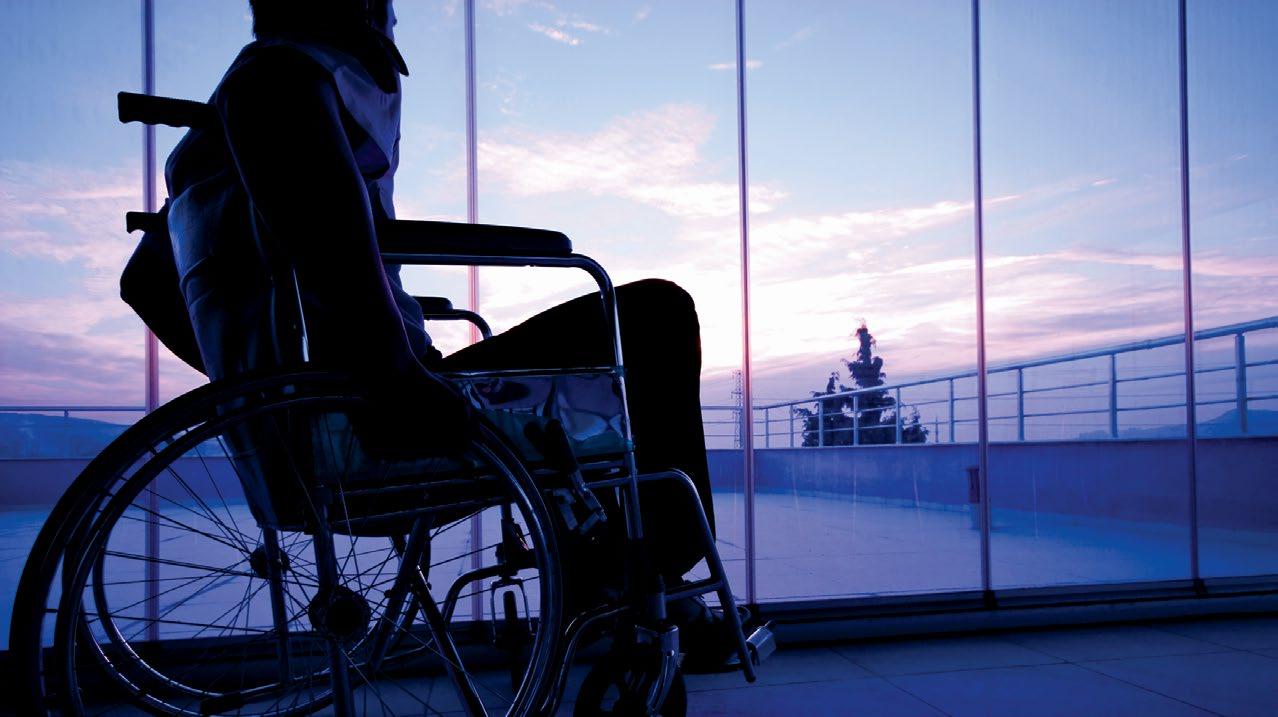




By Joy Stephenson-Laws, Managing Partner
Research and real-world experience continue to show that reducing patient length-of-stay (LOS) offers multiple benefits for providers and patients alike.
For providers, reducing LOS can increase capacity by freeing up already stretched resources, minimize the risk of denied claims and uncompensated care, increase patient satisfaction ratings, and improve throughput allowing for more patients to be treated. For patients, a reduced LOS usually saves money, reduces the risk of hospital acquired
infections (HIA), gets them back to their normal routine more quickly (which has numerous psychological and economic benefits), and results in improved treatment outcomes.
Given these proven benefits and considering that providers are under constant pressure to achieve the dual goals of maintaining quality-of-care while lowering operating costs, it would be easy to believe that reducing LOS should be a sine qua non in provider operations management. The problem, and risk, of adopting this philosophy, however, is that while shortened LOS does, for the most part, benefit providers and patients alike, this
is not always the case. There also is no universal agreement on exactly what LOS targets should be for different in-patient procedures nor of the corresponding risk/benefit. The situation is further complicated by contradicting results from different research studies on this very important aspect of provider operations.
Consider, for example, a recent study from Norway conducted by St. Olavs Hospital and the Norwegian University of Science and Technology. In this study, researchers were looking specifically at the relation between LOS of hip fracture patients and surviv-
ability after discharge. What they found was these patients have a higher risk of dying if they are discharged from the hospital too early (primary due to capacity issues). In their sample of 60,000 patients over 70 years of age who were discharged early, approximately 13 percent died within the first 60 days following surgery. During the first year, some 27 percent died. To give these data context, according to the researchers, the difference in 60-day mortality rates for these patients and others is approximately four percentage points. Contrasting, and contradicting the Norwegian study, is one from Virginia Commonwealth School of Medicine in the United States. In this study, researchers found the opposite to be true – specifically that the longer a hip fracture patient stays in the hospital, the more likely that patient will die within 30 days of discharge. Here, researchers studied a sample of more than 188,000 patients admitted to hospitals for hip fracture in the state of New York. In comparison to the Norway study, they found that hospital stays of from 11 to 14 days were associated with a 32 percent increased

This quarter’s Spotlight is on Partner, Barbara Lam.
What is your area of expertise within SAC?
I have been with SAC since 2004, less my 5-year sabbatical in South Carolina. My practice is focused on resolving managed care and insurance reimbursement disputes for our California clients. The issues vary with each claim, but may involve disallowed charges, level of care reduction, improper exclusion of benefits, DRG level reduction, rescinding authorization after services rendered, etc. In addition to those contract interpretation disputes, my practice also involves filing lawsuits against non-contracted insurance plans, as well as employer sponsored health plans for nonpayment/underpayment of emergency services rendered. My work is part of SAC’s mission to assist our clients in their revenue recovery position so that they can continue to provide needed medical services to everyone.
odds of death 30 days after discharge compared to stays of five or fewer days.
The lead researcher explained the difference in results by opining the “the shorter you stayed in the hospital in the United States, the better.” He went on to say that this may be due to the care received after leaving the hospital since, in the U.S., more than 90 percent of patients go from the hospital to a SNF for continued care and rehabilitation. This is not necessarily the case in other countries where patients may just be sent home after a hip fracture hospital stay.
There are other research data that could easily lead hospital administrators to rethink what has become conventional wisdom about LOS and even reexamine their existing discharge protocols and procedures. Some, for example correlate shorter LOS with a significantly higher risk of readmission. This can create a financial risk for providers from Medicare readmission penalties. Other studies also suggest that the cost of readmitting patients (aside from possible Medicare penalties
which recently totaled more than $563 million) can often be more than cost related to keeping a patient under the hospital’s care for a little longer. This is not surprising given that unplanned readmissions cost U.S. providers between $15 billon and $20 billion annually.
For the patient, accelerated or premature discharge may also pose risks to their physical and financial health. A recent study of over 32,000 people discharged from the University of Texas Southwestern Medical Center showed that approximately 20 percent of them were discharged too early. An analysis of the outcomes for those patients discharged too early revealed that many had abnormalities or instabilities in temperature, heart rate, blood pressure, respiratory rate and oxygen saturation within 24 hours of discharge. The outcome was that while 12.8 percent of patients discharged with no instabilities in their vital signs at discharge either were readmitted or died, 16.9 percent of those with one instability died or were readmitted; 21.2 percent with two instabilities died or were read-
What one piece of sage advice can you offer to our clients that can help them in the future?
In contracting, negotiate in areas beyond the reimbursement rates. Deadlines and the dispute resolution provisions include hidden roadblocks to full recovery. We have seen hospital services agreements with high reimbursement rates; however, other aspects within those same agreements can create significant obstacles for our clients to collect on those high negotiating rates. For example, some contracts require our clients to submit their clinical disputes to an independent review organization (IRO) process instead of an arbitration process. Additionally, the IRO requests must be submitted within a defined period, otherwise, the health plan’s prior determination is deemed final and binding. Our clients should negotiate to remove those IRO requirements from their contracts. Alternatively, if deleting the IRO language is not an option, then the providers should attempt to negotiate the following provisions to make the IRO obligations less one-sided: (a) for a longer period for the provider to submit its IRO requests; (b) for a specific time period for the health plan to respond to the provider’s IRO requests, (c) allow the provider to include
additional medical records with the IRO requests, etc. Another example of unfavorable contract terms is the shortening of the 4-year statute of limitations (SOL) period to bring a lawsuit against a health plan for breach of written contract. Under California law, providers have 4 years from a breach of a written contract to bring a lawsuit. However, there are contracts where our clients have agreed to shorten that default 4-year period down to just 12 months to file a lawsuit. In addition to reducing the SOL period, some contracts also double-down against our clients by requiring timely submission of their appeals within that same 12-month period. And in those contracts, if either submission is untimely our clients have no further right to pursue additional payment on the disputed claims. Accordingly, it is best practice for our clients to also negotiate the other terms within their health services agreements beyond the contract rates.
Can you talk about a recent success story of yours? What was the challenge and how were you able to overcome it?
I had a recent case where our client was required to provide emergency services, but the health plan
mitted; and 26.0 percent with three or more died or were readmitted.
LOS today are less than what they were back in 1980, when the average LOS in the United States was 7.3 days. The most recent measurement of this metric puts the average LOS at 4.5 days.
Hospital in-patient acute care and critical care capacities will most likely continue to shrink over the short and medium term given hospital closures and cost-cutting measures. This is happening at a time when demand for these resources most likely will continue to increase as a function of population growth and the ongoing Covid-19 pandemic. This creates a very delicate balancing act for providers since both discharging patients prematurely and keeping them in the hospital too long carries risks for both.
Given that finding the best LOS for any given situation has ramifications for provider and patient health, this would be a good time for providers to
paid only a small percentage of the bills. Instead of paying reasonable value for the emergency services, the health plan engaged in aggressive litigation tactics, including discovery, motions and sanctions, which resulted in the court ordering the parties to a discovery referee and mediation. The challenge was to keep the litigation cost down for our client while convincing the health plan to pay additional money on the claims. At mediation, we had a better insight into the health plan’s legal position, but the parties were too far apart.
However, the case eventually reached a settlement after the parties took the depositions of the staff and medical experts. The resolution was favorable to our client. And we managed to keep the client’s costs down by persuading them to designate their medical director as the medical expert instead of retaining an outside medical expert.
Do you have any hobbies or interests outside of work?
With my kids being active high school athletes, I spend my free time attending their local games and travel tournaments. My son plays water polo and luckily most of his games and tournaments are within a 2-hour drive, with two exceptions: (1) one KAP7 tournament in southern California annually and a USA Water Polo National Junior Olympics in southern California every other year. On the
take a second look at their current discharge protocols and procedures, including post-discharge patient after-care and follow-up. Key elements to review include:
Where will patient be discharged to? Sending a patient home to family members who can care for him/her has different implications than sending an older patient who live to a home where no one is there to support or care for them. Also is the home suitable for the patient’s condition?
How functional is the patient? Will he/she be able to adequately self-care once discharged?
Or will they require some sort of life-skills support for feeding, toileting and general daily activities?
Will there be any challenges in getting medications, follow-up services or other elements of the post-discharge plan?
At what time during the day is the discharge planned? In general, it is better to discharge
other hand, my daughter plays volleyball, and her travels are significantly more demanding. Although there are some local games, however, most of her volleyball tournaments are as near as a 3-hour drive to Sacramento or as far as flights to Las Vegas, Spokane, and Minneapolis. Those trips away are very challenging but I love the opportunities to be with them and seeing their joy in playing.
Do you have any charitable causes that interest you and events you have participated in recently?
Most of my volunteer work is performed at the kids’ school from proctoring exams to organizing mental health events for the staff and students. What is sadly interesting is when the kids were in elementary school, they were so happy when they saw me on campus. Now that they are in high school, I am lucky if I get an acknowledgement when they walk by with their friends.
Do you have family and/or pets you’d like to tell us about?
My husband, Olgu, was trained as an electrical engineer and now works for PlayStation’s marketing. My son is a junior and my daughter is a freshman, both at Henry M. Gunn High School. They are great kids, except when they are fighting over who will bring in the trash bins, who will unload the dishes, etc. This
patients during the day, if possible, to facilitate transportation and ease operational bottlenecks.
Does the patient have a history of readmissions? If so, the most prudent thing for them and for the provider is to consider extending LOS.
How is the patient’s cognitive status? Is she/he fully aware and able to understand discharge and post-care instructions?
There are a variety of screening tools that providers can use to determine the readiness of any given patient for discharge. These include the LACE Index and Hospital score as well the 8Ps Risk Assessment tool.
The overriding guiding principle should be that reduced LOS due to better treatment is in the interests of the patient and the provider. But reducing LOS primarily because of capacity or financial pressures creates unnecessary risks for both.
is a tough year for Andersen as he is working to keep his grades up and trying to do something unique so he will stand out on his college applications in the fall. Elizabeth is having an easier time as she is adjusting from middle school and following her brother’s academic plans. They are great but could be more if they would cook a dinner for the family once a week.
Do you have any guilty pleasure television shows, movies or other activities to tell us about?
I prefer reading to watching TV. But when I do watch TV, I try to find shows that are based on published books, such as Vera, Bosch, Shetland, Reacher, Dark Winds, etc.
What are your favorite foods? Colors? Other favorites?
I love to eat and love trying different foods. My favorite fruits are watermelon and durian. Dark chocolate makes all desserts better for me. Main dishes must be spicy. And if someone else does the cooking, the food is fantastic!
Following the success of last year’s educational series, we’re excited to share that plans are in motion for another impactful series in Spring or Early Summer 2025. This series will continue to focus on essential topics and practical strategies for post-appeal recovery success.
Keep an eye out for updates in the coming months –dates and details will be announced soon!
All articles are written by the SAC Litigation team. The SAC Litigation team includes attorneys, nurses and physicians with extensive experience in all areas of law related to healthcare matters. Additionally, SAC partners hold legal advisory positions with healthcare organizations and sit on the boards of numerous healthcare-related organizations, and monitor all outgoing SAC client marketing materials and related content.
We would love to hear from you! If you have questions, comments or feedback, please email us at SACReview@sacfirm.com.



